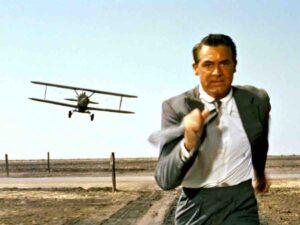From Rebecca (1940) to North By Northwest (1959), these are the best Alfred Hitchcock movies, ranked.
One of the most influential filmmakers of all time, Alfred Joseph Hitchcock (1899-1980) mastered the art of creating suspense and interweaving fear, holding us captive and in awe, unlike any other filmmaker. Brought up in a strict, Catholic household, Hitchcock was the youngest of three siblings. The accomplished director remembers having a lonely and anxious upbringing. In addition, he had a fascination for the macabre and the weird from an early age. He once stated that the “only way to get rid of my fears is to make films about them.”
Alfred Hitchcock started his filmmaker career as a director in 1920s British silent cinema. Pleasure Garden marked his directorial debut in 1925. A huge cinephile, he watched almost everything that was made in those years. In the early 1920s, he was particularly influenced by the works of German Expressionist masters Fritz Lang and F.W. Murnau. In 1927, Hitchcock made serial-killer thriller The Lodger, which propelled him into the limelight.
The Master of Suspense relocated to Hollywood in 1939 from England. Film scholars attest that Hitchcock’s greatest productive time was between the 1940s and the early 1960s in America. Quickly then, here are the 20 greatest Alfred Hitchcock movies ranked:
Best Alfred Hitchcock Films, Ranked
20. To Catch a Thief (1955)

To Catch a Thief was different from the era’s other suspenseful Hitchcock classics. It was more or less a light-hearted crime/thriller with the charming lead pair, Grace Kelly and Cary Grant. The narrative revolves around a retired cat burglar John Robie (Grant) who happily lives in the French Riviera. But he becomes the prime suspect when a string of robberies happen on the Riviera. In order to clear his name and find the thief, Robie teams up with insurance investigator Hughson. Robie rounds up a list of the unknown thief’s possible future victims. One among them was a wealthy widow and her gorgeous yet disdainful daughter, Frances (Grace Kelly).
To Catch a Thief is Hitchcock’s harmless confection conceived with a sole intent to provide wholesome entertainment. The central mystery and the character backgrounds might seem implausible or too contrived. Yet the film charms us with its playful tone, fantastic locales, and exciting performances. Similar to Hitchcock’s early American classic Notorious, romance and courtship gradually become the focus of the movie. However, the romantic relationship portrayed in To Catch a Thief isn’t as bleak as the 1946 film.
19. Lifeboat (1944)

Alfred Hitchcock, the master craftsman, often experimented with the use of space in his films. A murder scene that unfolds in a shower in Psycho consisted of 78 camera set-ups and 52 cuts. Besides, he generated suspenseful moments by setting his entire narrative within a confined space. In Rope (1948) and Rear Window (1954), he imprisoned his camera within a single setting, yet managed to make a puzzling thriller. But long before all these spectacular instances, Mr. Hitchcock successfully experimented with confined space in his 1944 film Lifeboat. Set during WWII, the narrative follows a rag-tag bunch of people, who survive a German torpedo attack on a luxury steamer.
Among the nine survivors there’s also a German sailor named Willy, who has survived a boat shelling by the Allied forces. A wealthy newspaper columnist named Connie Porter (Bankhead) emerges as the most interesting character. The production design and special effects of Lifeboat might seem crude for today’s standards. But Hitchcock does a fantastic job staging this clash between these distinct characters. The lack of musical score and natural sound effects add to the movie’s eerie setting.
18. The Lodger: A Tale of the London Fog (1927)

The Lodger is Alfred Hitchcock’s third feature-film, which is based on Marie Belloc Lowndes’ 1913 novel. Lowndes’ story was considered to be the first novelization of unsolved and grisly Jack the Ripper murders that occurred at Whitechapel in East London. In Hitchcock’s film, the serial-killer calls himself ‘Avenger’, and only kills young blonde women on Tuesdays. On a foggy night, a young man named Jonathan Drew arrives at a lower-middle class household to rent a room. House owners Mr and Mrs. Bunting are suspicious of Jonathan because he seems to fit the description and behavior of the prowling serial-killer.
The couple only get more alarmed when Jonathan is attracted to their blonde clothing model daughter, Daisy. The Lodger is noteworthy early Hitchcock cinema which is an eclectic mix of German expressionism and French impressionism. Hitchcock’s experiments with mise en scène also paid pretty well in the tense sequences. One of the longest running themes in Hitchcock’s cinema is the persecution of the innocent individual. In The Lodger’s final moments, the filmmaker exercises his trademark style to effectively deal with this theme.
17. Spellbound (1945)

Spellbound marks the second of the three collaborations between Hitchcock and renowned Hollywood producer David O. Selznick. Though Selznick facilitated Hitchcock’s glorious Hollywood debut with Rebecca (1940), the two men continually engaged in conflict over creative control. The popular studio-era scribe Ben Hecht penned the script for Spellbound based on the novel The House of Dr. Edwardes. Often touted as Hollywood’s first movie about psychoanalysis, Spellbound was a passion project for Selznick.
The basic story tries to reduce Freud’s complex psychoanalytical ideas in order to fit the mystery/thriller framework. The narrative revolves around the new head of psychiatric center Green Manor, Dr. Anthony Edwardes (Gregory Peck). He meets Dr. Constance (Ingrid Bergman) at the facility and the two fall in love. Soon she discovers that the man she has fallen in love with is an imposter. While Spellbound is an average mystery narrative, Hitchcock’s mise en scène is extraordinarily staged. The dream sequence in particular – which was designed in collaboration with surrealist Salvador Dali – still holds the power to capture our attention.
16. Frenzy (1972)

Frenzy was Alfred Hitchcock’s penultimate film and saw the director return to an idea from his silent-era days. Like his 1927 movie The Lodger, Frenzy focuses on the crimes of a serial-rapist & murderer and the city-wide panic that ensues. It is based on Arthur La Bern’s 1966 novel. Frenzy also marked Hitchcock’s return to homeland to make a movie after more than two decades. Another interesting tidbit is that it was the first Hitchcock movie to be rated R. We are made aware of this in the film’s opening minutes as we see the nude body of a young woman, strangled with a neck-tie, floating in the Thames River.
Richard Blaney, an unemployed down-on-luck man finds himself to be the suspect in a serial-murder case. The real perpetrator, however, is a friendly man from the same neighborhood, who also befriends the innocent Blaney for sinister purposes. Although Frenzy is in familiar Hitchcock-ian territory, the filmmaker amplifies tension with his ingenious style. The eerie tracking shot of the staircase that follows the killer and his unknown victim is chilling.
15. The Wrong Man (1956)

The Wrong Man is a non-typical Hitchcock movie with a standard Hitchcock-ian theme: an innocent, ordinary man accused of a crime. It marks acting legend Henry Fonda’s one and only collaboration with the master of suspense. Mr. Fonda plays Manny Balestrero, a struggling musician playing in a band at a small jazz club. Despite financial difficulties, Manny lives happily with his wife Rose (Vera Miles). But when Manny tries to borrow money from the Insurance Company using his wife’s policy, he runs into trouble. A clerk and the police think that Manny bears a vague resemblance to the man who has committed a series of robberies. Soon, Manny finds that the entire American legal system is stacked against him.
Hitchcock creates an incredible atmosphere to heighten Manny’s paranoia and helplessness. There are no great twists or tense set-pieces like in Vertigo or Psycho. But The Wrong Man perfectly puts us in the shoes of Manny, making us feel that it could happen to any of us. Besides, Henry Fonda’s understated performance splendidly conveys the wronged man’s dazed mental state.
14. The 39 Steps (1935)

Among his early output in British cinema, The 39 Steps is considered to be the first true ‘Hitchcock’ film. Alongside The Man Who Knew Too Much (1934), it proved to be his breakout hit. In fact, The 39 Steps is the perennial favorite of Hitchcock himself, where he effortlessly infuses many of his trademark narrative traits and characterizations. An affable Canadian businessman named Richard Hannay (Robert Donat) gets embroiled in an espionage plot and is accused of killing a mysterious young woman, Annabella Smith.
Hannay makes a quick getaway and boards a train to Scotland to investigate the clues left behind by the murdered woman. The 39 Steps is based on John Buchan’s 1915 novel, which was turned into a fast-paced script by Charles Bennett. The film also shows the master’s ability to mix thrills and comedy to a great effect. While it lacks thematic or emotional depth unlike Hitchcock’s later Hollywood films, it’s watchable for the sheer visual pleasure. The framing and pacing of certain chase sequences still holds up pretty well.
13. Dial M for Murder (1954)

Starring Grace Kelly as Margot Wendice, Dial M for Murder tells the story of Tony (Ray Milland) plotting to kill his wife, after he finds out about her affair. He seeks the help of an old friend Charles (Anthony Dawson) to help him execute a sinister plan. But plans go awry when Margot manages to fend off her attacker, killing him. Tony tries to cover up his crime and frame Margot, while the Chief Inspector (John Williams) from Scotland Yard investigates the murder.
The moral dilemma now rests with the audience. Who’s right and who’s wrong? Nothing is clear any more. The dialectic opposites are battling each other not only in the film but also in the minds of the viewers, who are also partly shouldering the burden of the crime of the one they’re actually rooting for. Dial M for Murder is not as sleek or visually striking as Hitchcock’s greatest works like Rear Window or Vertigo.
However, Hitchcock the director brilliantly uses his actors and their characters’ interpersonal dynamics to build up tension.
12. Foreign Correspondent (1940)

Foreign Correspondent is Hitchcock’s second Hollywood film, following the great success of Rebecca. It’s a war-themed thriller, which expands on the premise the filmmaker already dealt with in films like The 39 Steps and The Lady Vanishes. It revolves around intrepid crime reporter Johnny Jones (Joel McCrea), who is promoted as the newspaper’s new foreign correspondent. With clouds of war looming in the horizon, Jones travels to Amsterdam to interview a Dutch cabinet minister Van Meer. Meer is also a prominent diplomat who is vital to the peace negotiations in Europe. But when he is assassinated in front of Jones, the reporter embarks on a thrilling journey to unveil a terrifying conspiracy.
Foreign Correspondent contains nerve-wracking chase sequences, bouts of sardonic humor, and energetic performances. It was Hitchcock’s one and only collaboration with the celebrated Polish-Hungarian cinematographer Rudolph Mate. The shadowy staging and claustrophobic atmosphere – obviously influenced by German expressionist style – meticulously immerses us into this espionage adventure. The special effects are also highly innovative for its time, particularly the airplane crash sequence.
Overall, Foreign Correspondent is a spy thriller with both depth and style.
11. Rope (1948)

Rope is one of the most unforgettable works of Alfred Hitchcock. It narrates not only a gripping tale of murder but also investigates the lives of those affected by it. The film is based on Patrick Hamilton’s play, which itself was based on the infamous Leopold and Loeb case. In May 1924, two wealthy university students lured their 14-year old neighbor Bobby Frank and killed him. Both Leopold and Leob confessed to killing the boy just for the sake of thrill-seeking. Alfred Hitchcock uses this premise to stage his most extreme experiment.
He opens the film with the murder of an unfortunate young man. The filmmaker goes on to set the entire narrative inside the wealthy murderers’ penthouse apartment. Rope’s moral anchor is the cynical yet humane mentor of the two youngsters (a scene-stealing performance from James Stewart). The film also has a homosexual subtext which Hitchcock was unable to explore directly. At the same time, the filmmaker’s portrayal wasn’t exploitative or spiteful. A balanced and well-crafted suspense thriller, Rope is definitely among the finest in Hitchcock’s career.
10. The Lady Vanishes (1938)
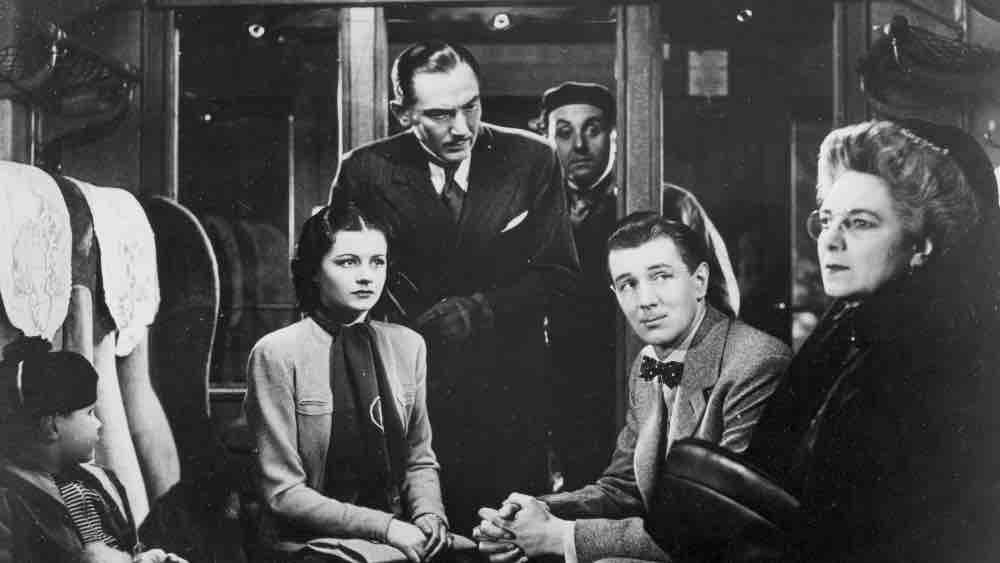
Similar to The 39 Steps, The Lady Vanishes is a relaxed and hugely entertaining British film from Hitchcock. Of course, the movie consists of a life-or-death scenario, but there’s a playfulness in the way Hitchcock unfolds the narrative. In fact, the master’s witty visual and narrative flourishes only got better in his American movies. The initial narrative stretch of The Lady Vanishes feels like a screw-ball comedy as a rich, young lady named Iris (Margaret Lockwood), vacationing in Europe meets a kind old lady, who is also a British national. The old woman Miss Froy (May Whitty) seems to be a governess.
They board a train at a central European town alongside few other British tourists. Gilbert (Michael Redgrave), the musicologist, is the most enchanting lad among the fellow travelers. He helps Iris when she discovers that the old lady is missing. What’s more alarming is that no one else in the train acknowledges that the old woman ever existed. Soon, the duo uncover a powerful political conspiracy. Apart from Hitchcock’s clever aesthetics, The Lady Vanishes offers a glimpse into the era’s geopolitical issues.
9. Notorious (1946)

Alfred Hitchcock’s tense spy thriller revolves around Alicia Huberman (Ingrid Bergman), daughter of a captured Nazi Germany agent. She is approached by the cool and charismatic FBI agent Devlin (Cary Grant) to infiltrate a secret Nazi spy ring in Rio de Janeiro, Brazil. The FBI agent and freshly recruited spy’s relationship gets complex as they fall in love. Besides, a certain menace lurks in the shadows for this love-struck couple. Notorious isn’t a well accomplished suspense thriller like Hitchcock’s North by Northwest. Some of the character motivations and plot developments seem too contrived.
Yet Hitchcock’s primary intention with Notorious is to explore the tension in the relationship between Alicia and Delvin. The whole espionage story simply comes across as mere window-dressing. And actually this isn’t a bad thing. In fact, writer Ben Hecht’s keen characterizations, Bergman & Grant’s phenomenal performances plus Hitchcock’s intrepid visual flourishes make Notorious a brilliantly layered work about love, trust and deception. It was a technical masterpiece for its time. Another intriguing aspect of the film is Claude Rains’ idiosyncratic villain Alex Sebastian.
8. Strangers On A Train (1951)

A study in human psychology, Strangers on a Train is simply one of the best films of all time. Based on Patricia Highsmith’s novel, the movie concerns two men who accidentally meet on a train. It all seems like a chance encounter, but their fates get irreversibly intertwined when one of them turns out to be a murderous maniac. The deliberations on the value of life and the burden on one’s conscience is profoundly explored. It’s so suspenseful yet quite action-packed for a Hitchcock movie.
Strangers On A Train gives us some of the best performances in Hollywood. Robert Walker’s menacing performance in particular amplifies the tension. And with that, we get a plot that is completely original and stimulating. The narrative’s queer subtext has been discussed quite a lot. There were rumors that Raymond Chandler’s script version had coded elements to suggest the characters’ homosexuality, and writer Ormonde’s final version removed everything. At the same time, many scholars and critics consider the carousel climax scene to be Hitchcock’s nuanced way of hinting at a character’s sexual passion.
7. The Birds (1963)

This is a quintessential Hitchcock movie and many call it the ‘last great Hitchcock film’. It tells the story of a small town that is ravaged by a violent bird population. The film opens with wealthy socialite Melanie Daniels (Tippi Hedren) traveling to a remote lakeside town to confront the handsome bachelor Mitch Brenner (Rod Taylor), who had insulted her. While crossing the lake, Melanie is attacked by a seagull. It’s the first in the series of escalating, inexplicable events that soon begin to haunt the picturesque town.
The Birds starts off like an innocuous romantic comedy and gradually veers into the territory of disaster cinema. But leave it to Hitchcock to turn something as insignificant as a bird infestation into material for unhinged horror and unrelenting suspense. What I absolutely love about the film is its capacity and its courage to keep the audience in the dark long into the film. And there’s no escape! Add to that some excellent performances, fantastic special effects, and an aesthetic setting that is chilling and you get what is, arguably, the most immersive and ambiguous Hitchcock cinema.
6. Shadow of a Doubt (1943)

Hitchcock has referred to Shadow of Doubt as one of his personal favorites. It’s also one of the most influential Hitchcock movies, not just in terms of style. The storyline of Shadow of a Doubt has somewhat influenced films like Charles Laughton’s Night of the Hunter (1955), David Lynch’s Blue Velvet (1986) and Park Chan-wook’s American debut Stoker (2013). On the outset, Shadow of a Doubt seems like a drama set in a ‘normal’ American small-town. But beneath the calm appearances lie evil, predatory behavior of people which gradually unfolds in the narrative.
The film revolves around Charlie Newton (Teresa Wright), a bored teenager in Santa Rosa who’s excited by the arrival of her worldly uncle (and namesake) Charlie Oakley (Joseph Cotten). But Charlie soon learns that her uncle might be the notorious serial-killer known as “Merry Widow Murderer.”
One of the most underrated Hitchcock movies along with Rope and Notorious, Shadow of A Doubt is undoubtedly one of the best artistic pieces created by Hitchcock. Today, it has gained the reputation that it deserved then and all the acclaim it is worthy of.
5. Rebecca (1940)
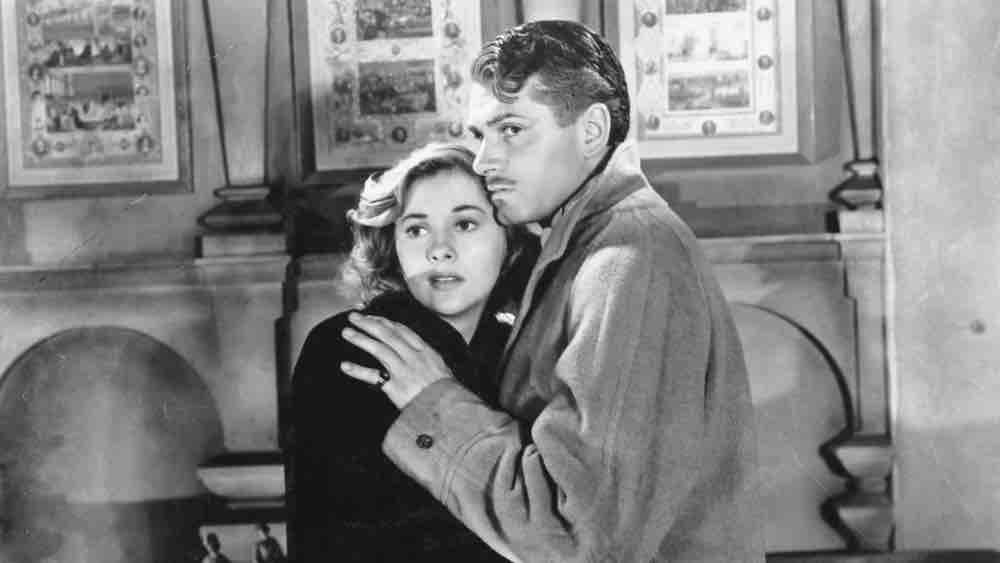
Rebecca was Hitchcock’s first film in Hollywood, and was produced by the legendary David O. Selznick. Based on a novel by Daphne du Maurier, it tells the story of a young unnamed woman (Joan Fontaine) who falls desperately in love with, and marries a wealthy widower named Maxim de Winter (Laurence Olivier). But as soon as she’s settled in his country estate, she uncovers disturbing secrets about his late wife, Rebecca. The new Mrs. Winter also finds it hard to get herself acquainted with the superficial ways of aristocratic class.
Furthermore, the intimidating house-keeper Mrs. Danvers (Judith Anderson) who adored Rebecca, looks at the estate’s new mistress as an intruder. In fact, Mrs. Danvers is one of the most terrifying villains in Hitchcock’s oeuvre. Rebecca was one of the finest psychological thrillers produced by the industry. It hauntingly and effortlessly captures the gothic feel of the novel. The ingenious visual style elevates the plot conflicts using the mansion architecture to a great effect.
Surprisingly, this was the only Hitchcock film to win Best Picture.
4. Rear Window (1954)
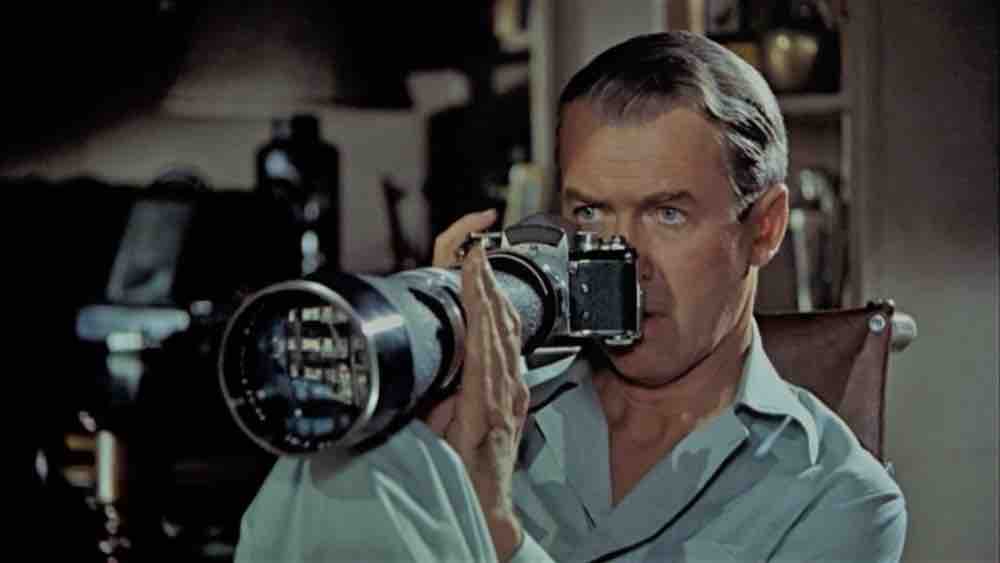
Alfred Hitchcock makes an extremely well structured, suspenseful thriller using one confined space with a man in a wheelchair and a telescope. Rear Window refers to the window of a photojournalist, LB Jeffries (James Stewart) confined to a wheelchair who passes time spying on his neighbors. But soon, Jeff becomes suspicious of his neighbor Lars Thorwald murdering his wife and getting away with it. And no amount of Grace Kelly, Jeff’s love interest, appearances can get him to look away. However, since Jeff can’t leave his apartment, it becomes increasingly difficult to prove his hunch.
Rear Window is a film about human curiosity and our innate inquisitiveness. Jeffries’ compulsive prying feels relatable and Hitchcock cleverly makes voyeurs out of us, making us the protagonist’s silent partner. Once again, Hitchcock’s portrayal of women leaves a lot to be desired. They either run into peril or seek domestic bliss and the validation of their male partners. But Hitchcock’s slow suspenseful build-up and adrenaline pumping tense moments keep us thoroughly invested in Jeffries’ amaetur armchair sleuthing.
3. Vertigo (1958)

The affable all-American hero James Stewart, in his fourth and final collaboration with Alfred Hitchcock, plays one of the darkest roles of his career. Stewart’s Scottie Ferguson is a celebrated detective in the San Francisco Department until his acrophobia leads him to quit the force. Subsequently he’s hired by an acquaintance to tail his wife Madeline (Kim Novak) because the man says she is behaving strangely. But Scottie falls in love with the beautiful Madeline, and his feelings are reciprocated. However, when she jumps off a bell tower, Scottie is unable to save her because of his fear of heights.
The episode leads to a nervous breakdown, and after getting released from hospital Scottie meets Judy, a woman who looks exactly like Madeline. His obsession for Madeline only gets worse as he tries to resurrect the dead past. Most Hitchcock films consist of characters suffering from some form of psychosis, which manifests in the form of a harmful obsession. But Vertigo is the most distressing Hitchcock film that closely studies a man at the brink of a psychosis.
2. Psycho (1960)
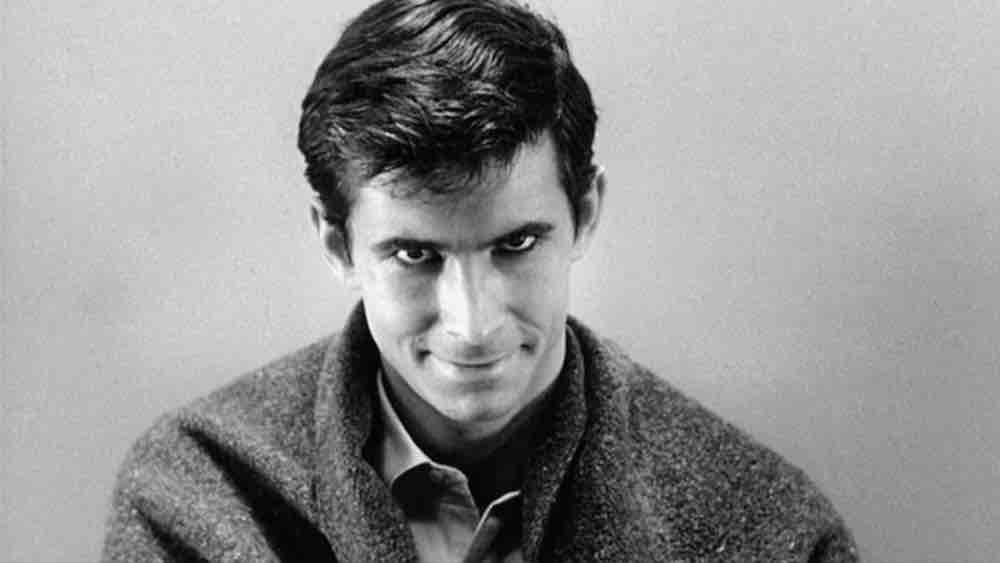
Alfred Hitchcock somewhat abandoned his sardonic humor and refined tone to make this grittier, creepier monochromatic film. Psycho follows a desperate real-estate secretary Marion Crane (Janet Leigh), who embezzles a large sum of money, and goes on the run to start a new life with her lover Sam (John Gavin). Marion ultimately ends up at a remote motel. It’s run by a strange, unsettling man named Norman Bates (Anthony Perkins), who lives with his domineering mother in the creepy mansion opposite the motel. After a brief chat with Norman, Marion retires to her room. Meanwhile, Marion’s sister Lila, lover Sam, and a private detective try to learn Marion’s whereabouts. However, Marion is never seen again.
Psycho is a boundary pushing film, not just because of the iconic shower scene. Every little inventive camera angle, small Hitchcock-ian touches, and the rich subtext offered moviegoers something they’d never witnessed in cinema before. Apart from Hitchcock’s genius, the most admirable element of Psycho is Anthony Perkins’ magnificent performance. He is believable as the tortured young man with a devious inner personality.
1. North By Northwest (1959)

My grandfather recommended North by Northwest when I was 14. I’ve been hooked on Hitchcock ever since. The top four in this list are all flexible, really, so if you ask me, they can be arranged in any order you like. But since this was the first Hitchcock movie I ever saw, and for the sheer brilliance of the film, this Cary Grant-starrer takes top spot.
Grant plays suave New York advertising executive Roger Thornhill, who is mistaken for the CIA agent George Kaplan. The case of mistaken identity brings a lot of trouble to Roger, and he goes on the run to find out the truth. In a way, you could say that North by Northwest paved the way for daring male roles like James Bond and Indiana Jones. But what this movie will most be remembered for is the crop duster chase scene which never gets old. A moment that looks ludicrous and silly if described. But this unusually spectacular scene looks mesmerizing on-screen. And Hitchcock elegantly mounts the tension before reaching the crescendo in this scene.
The icing on the cake is Ernest Lehman’s structurally sound script.
Conclusion
“What is a man but a miserable pile of secrets?” This quote strongly resonates with the sentiments and core thematics of Alfred Hitchcock movies. The expertly crafted mysteries and the perfectly executed suspense are all magnificent by-products of the genius of Hitchcock. There are quite a few good Hitchcock films that haven’t found a place in this list. For Hitchcock buffs, I’d further recommend Blackmail (1929), Sabotage (1936), Stage Fright (1950), The Trouble with Harry (1955), The Man Who Knew Too Much (1956), and Marnie (1964).
(Additional writing by Aditya Sarma & Deepjyoti Roy)

